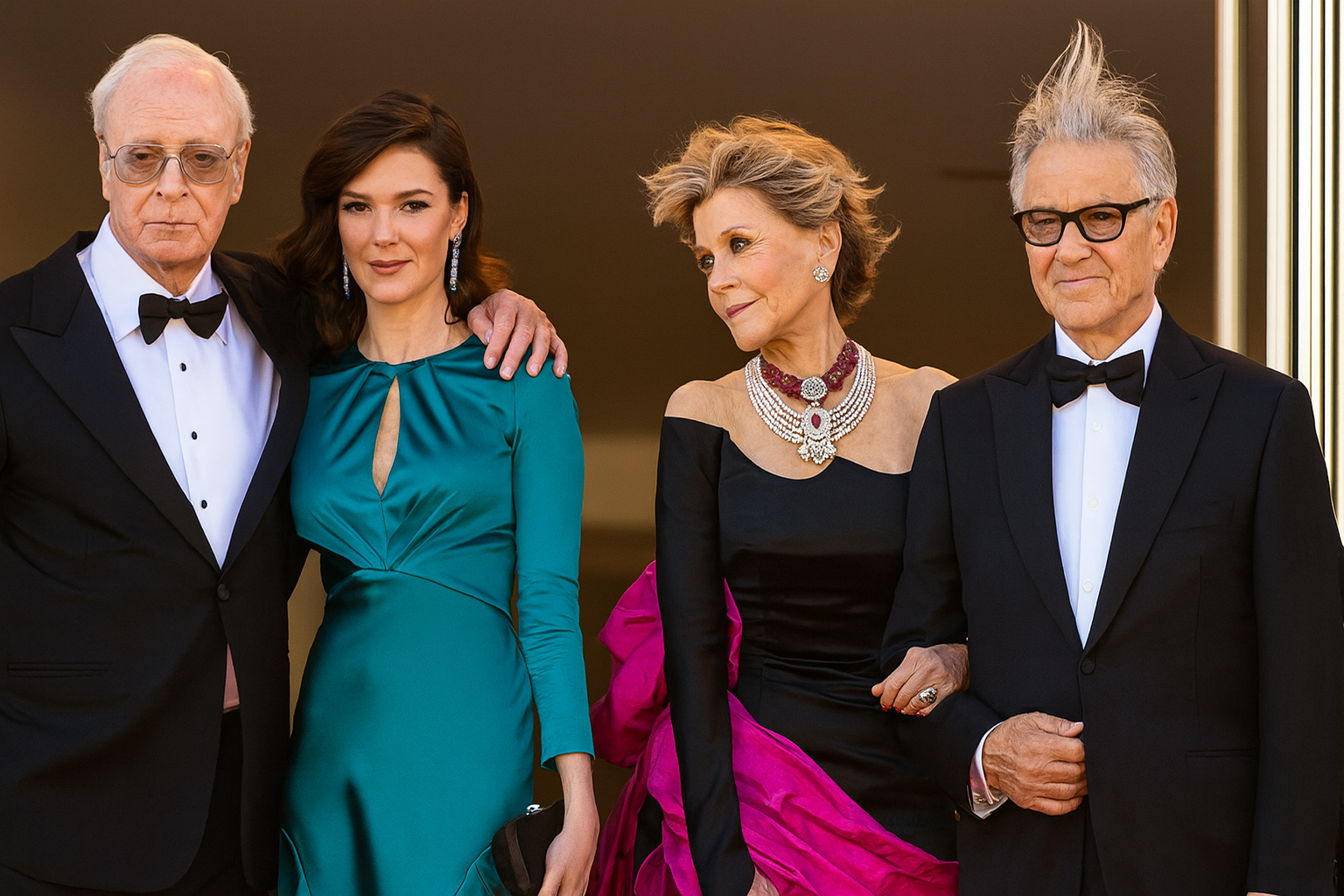Two Sides. One Story. You Make the Third.
3 Narratives News | October 3, 2025
“In the past, people rarely lived to be 70 — but these days they say that at 70 you’re still a child.” — Xi Jinping to Vladimir Putin, caught on a hot mic in Beijing. (Washington Post) (CBS News)
Intro — The Moment That Wouldn’t Let Go
Yesterday I paused a video mid-sentence. The interview was fascinating, but the elephant on the screen was larger: Jane Fonda, 87, sitting with the posture of a dancer and the skin of someone who has made peace with the sun. Eighty-seven, looking like a youthful 50. I found myself asking: How did she do that? What is the secret to aging well? That question became this story—the art of aging and rejuvenation.
Fonda has been candid: she once had a facelift and then stopped because she “didn’t want to look distorted.” She also repeats the unglamorous habits: sleep, movement, sunscreen, laughter, good friends. Less magic, more maintenance. (People) (LA Times)
The world of rejuvenation now spans everything—from nutrition and habits to high-end science and surgery—each offering a way to extend vitality and help people look and feel half their age.
Aging Is the One Story We All Live In
Globally, more of us are living long enough to watch our bodies stall: joints grind, skin thins, blood sugars drift, memory stutters. The question is not whether we age, but how. In Beijing last month, Xi and Putin’s hot-mic exchange about longevity, organ transplants, even immortality went viral. The theater is loud. The science is quieter—and much more interesting. (Reuters)
“Reprogram the Code” (Inside the Lab That Wants to Turn Back Time)
The idea, born from Shinya Yamanaka’s Nobel-winning discovery of induced pluripotent stem cells, is deceptively simple: age is partly software. If you nudge a cell with the right factors—Oct4, Sox2, Klf4, c-Myc—it remembers a younger self. Too much, and you erase identity. The trick is partial reprogramming. In mice, Salk scientists have shown rejuvenated tissues and longer life in a premature-aging model. (Salk, 2016) (Salk, 2022)
Another frontier is senescence—“zombie” cells that refuse to die. Clear them with senolytics, the pitch goes, and tissue breathes easier. Early human studies pairing dasatinib with quercetin report cautious signals (mobility, kidney disease) but no miracles yet. (Maurer et al., 2024) (eBioMedicine, 2025)
Boring Wins (Inside the Body That Refuses to Quit)
Picture a 72-year-old whose calendar is mostly verbs: walk, lift, cook, sleep. No hashtags. Just great habits, compounded.
A Cleveland Clinic study of 122,000 patients, led by Dr. Wael Jaber, found something stunning: the fitter you were, the longer you lived, with no upper plateau. The “extremely fit” lived the longest across all ages and conditions. “There is no level of exercise too high,” Jaber told The New York Times.
Nutrition matters just as much. The PROT-AGE group recommends 1.0–1.2 g/kg/day of protein for older adults, higher if ill or active. For a 70-kilo retiree, that’s 70–85 grams daily. “Protein is the most important nutrient for successful aging,” the panel wrote.
Then comes sleep—the cheapest therapy on earth. Neuroscientist Dr. Matthew Walker calls it “the Swiss Army knife of health.” Endocrinologist Dr. Eve Van Cauter adds: sleep acts like nightly hormone replacement, free if you keep regular bed and wake times.
The surface has its own prescriptions. Dr. Adele Green proved sunscreen slows skin aging in a randomized trial. Retinoids, pioneered by Dr. Albert Kligman, remain gold standard. Botox smooths lines for a few months, though side effects exist. A Cochrane Review confirmed results are real but temporary.
This toolkit—fitness, protein, sleep, sunscreen, retinoids, occasional injectables—is the world Jane Fonda points to when she warns against surgical addiction. “I’m not against surgery,” she told People, “but I don’t want to look distorted.”
Plastic Surgery: The High-End Accelerator
For those seeking faster results, plastic surgery has become a $67 billion global industry (ISAPS, 2023), growing nearly 10% per year. In the U.S. alone, 18 million cosmetic procedures were performed last year. California, with Beverly Hills at its center, leads the world.
- Facelift: $12,000–$20,000
- Breast augmentation: $8,000–$12,000
- Liposuction: $6,000–$10,000
- Eyelid surgery: $4,000–$7,000
Dr. Garth Fisher told Harper’s Bazaar: “The goal is natural rejuvenation, not obvious change. The best work should be invisible.” Dr. Sheila Nazarian, star of Netflix’s Skin Decision, adds: “We’ve learned to respect the face’s architecture rather than fight it.”
A 2022 survey by the American Society of Plastic Surgeons found 90% of patients reported higher confidence after procedures. Plastic surgery today is marketed as an investment in well-being, not a taboo.
Silent Story — Access, Honesty, and the Dignity of an Older Face
The longevity race risks becoming another inequality machine: boutique clinics for the few; sermons about “discipline” for the rest. Communities that move, eat, and sleep in rhythm age with fewer regrets. Meanwhile, the labs deserve scrutiny, not worship. If true rejuvenation arrives, public systems must deliver it fairly—or our faces will become passports of class.
Key Takeaways
- Cellular reprogramming and senolytics are promising but unproven in humans. (Salk)
- Fitness, protein, sleep, sunscreen, and retinoids remain the best tools today. (JAMA)
- Plastic surgery is safer, more natural, and more popular than ever, with California leading the way.
- Honesty and access matter—aging should not become another class divide.
Questions This Article Answers
- Is there a pill to slow aging? Not yet—lifestyle has the biggest proven effect.
- What habit has the biggest impact? Cardiorespiratory fitness shows unmatched survival benefits.
- What cosmetic interventions work? Sunscreen, retinoids, Botox, and surgery with certified teams.
Related at 3N: Health coverage · Longevity stories
